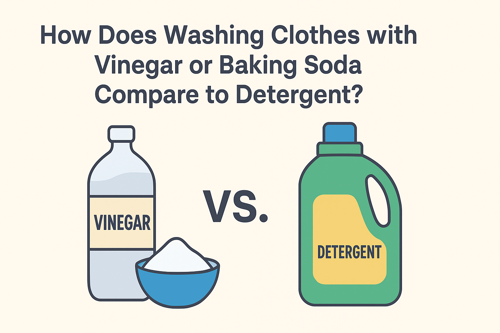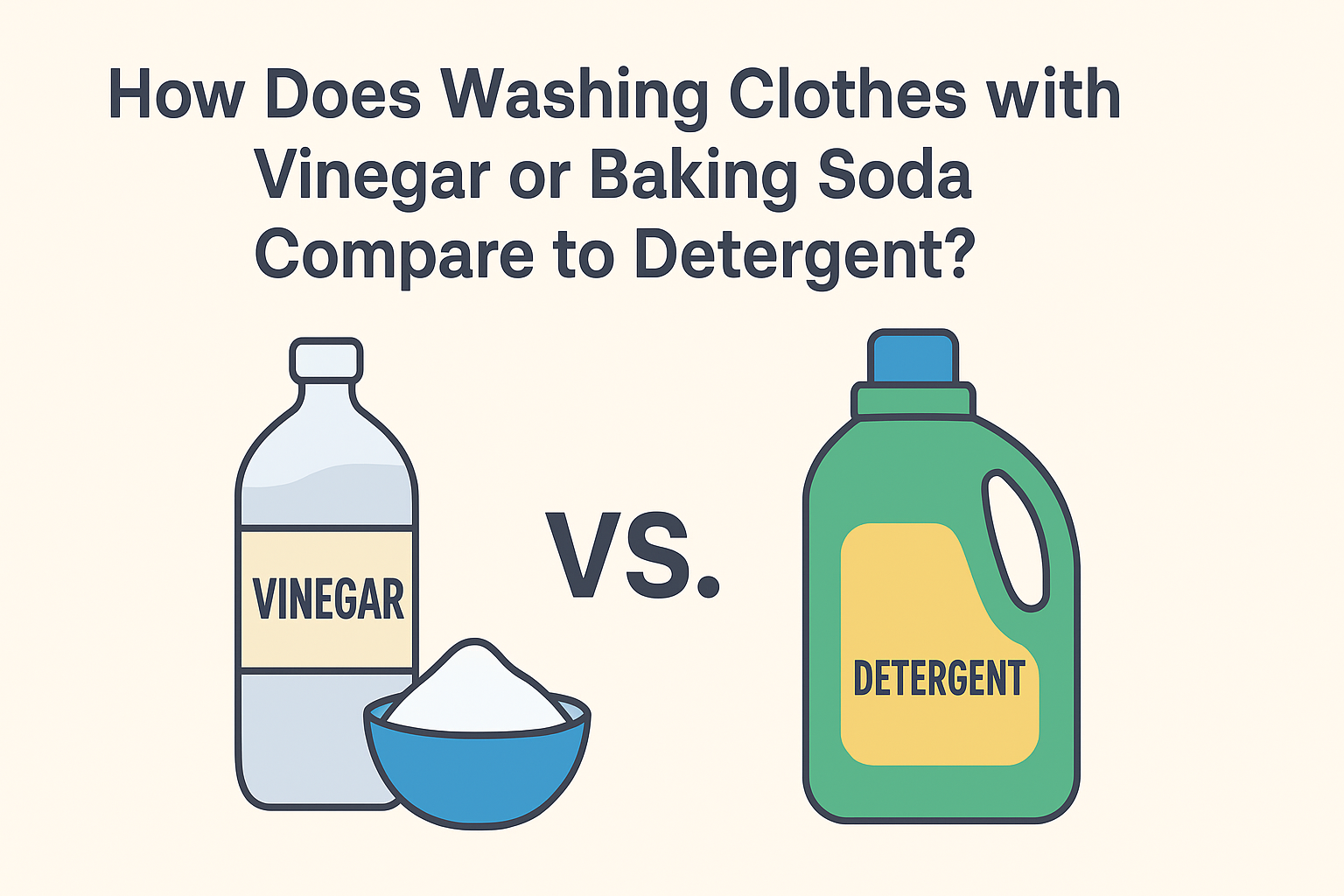How Does Washing Clothes with Vinegar or Baking Soda Compare to Detergent?
Many people explore alternative laundry methods using household staples like white vinegar and baking soda, sometimes hoping to reduce chemicals or save money. But how do these compare against conventional detergents? Let’s dig into the benefits, limitations, best practices, and when a professional service like Get Fresh Start Laundry might be the better route.

What Vinegar and Baking Soda Do in Laundry
White distilled vinegar (its active component is acetic acid) is mildly acidic, which gives it the ability to neutralize alkaline residues, help with softening fabrics, and reduce odors. Tide describes vinegar as useful for light laundry tasks such as brightening and deodorizing.
Baking soda (sodium bicarbonate) is a mild base that helps raise water pH slightly, which can enhance detergent performance, reduce odors, and control sudsing.
However, a crucial detail: don’t combine baking soda and vinegar in the same wash cycle, because they neutralize each other (acid + base = salt + water) and cancel out many of their benefits.
In practice, they are often used in separate steps: for example, baking soda during the main wash and vinegar during the rinse cycle.
Advantages and Realistic Uses
Here’s where vinegar and baking soda can help:
Odor control / deodorizing: Baking soda and vinegar can neutralize lingering smells, especially in clothing that isn’t heavily soiled.
Brightening / restoring whiteness: Vinegar can help dissolve residues and bring back brightness in whites.
Residue removal: Vinegar in the rinse cycle can help flush out leftover detergent or minerals that might cling to fabrics.
Fabric softening: Vinegar acts as a natural fabric softener by reducing static and helping fibers relax.
Because these are gentler than strong chemical detergents, they can be good for lightly soiled loads, for refreshing garments, or as supplemental treatments.
Limitations and Risks Compared to Detergent
While vinegar and baking soda have their uses, they also come with limitations and potential drawbacks:
Cleaning power: Detergents are engineered with surfactants, enzymes, and stain-fighting agents that break up oils, soils, and stains. Vinegar and baking soda alone often aren’t strong enough to remove tough grime, grease, or set-in stains. Many users report that detergent outperforms baking soda/vinegar in stain removal.
Neutralization issue: As mentioned, combining vinegar and baking soda in the same cycle largely negates their effects.
Machine wear: Frequent use of vinegar may degrade rubber seals, gaskets, and internal parts of washing machines over time, especially in high-efficiency (HE) machines. Some appliance experts caution against heavy reliance on vinegar for cleaning.
Not ideal for all fabrics: Acidic or alkaline treatments might harm elastic, spandex, or delicate fibers. For example, using vinegar too often could weaken elastic-based garments.
More effort and cycles: Because their cleaning power is limited, you may need multiple wash cycles or pre-treatment steps, which increases water and energy use.
In short: vinegar and baking soda are best seen as boosters or helpers, not replacements for detergent—particularly for heavy or tricky loads.
Best Practices for Using Vinegar / Baking Soda Wisely
To harness these household options most effectively, follow these guidelines:
Use half a cup to one cup of baking soda in the main wash for odor control or as a booster (never mix it with detergent in the dispenser).
Add a smaller amount of distilled white vinegar (¼ to ½ cup) in the rinse cycle (e.g. via fabric softener compartment), to help remove residue and soften fabrics.
For heavily stained or oily garments, pre-treat with a proper stain remover or enzyme detergent, rather than relying on vinegar or baking soda alone.
Limit use of vinegar to occasional or as-needed use—not for every load—especially if your machine is HE or has sensitive parts.
Always check the care label on garments and avoid using vinegar or heavy alkaline agents on fabrics with elastic or special finishes.
Why Detergent Still Dominates (and When It’s Better)
Detergents are formulated to deliver consistent, reliable cleaning across a variety of soils, fabrics, temperatures, and load types. They contain surfactants (to lower surface tension and lift soils), enzymes (to break down organic stains), builders (to buffer pH), and other additives (optical brighteners, anti-foaming agents, etc.). That engineering gives them better performance than vinegar or baking soda in many real-world scenarios.
So when you have:
Stubborn stains (oil, grease, ground-in dirt)
Mixed fabrics (synthetics, blends, delicates)
Large or heavy loads
Garments with color-fastness concerns
… detergent-based cleaning is usually the safer, more effective choice.
Let Get Fresh Start Laundry Do the Hard Work
If you're unsure which method to use—detergent, vinegar, baking soda, or a combination—or if you simply don’t want the hassle, Get Fresh Start Laundry offers a professional alternative. Our service gives you:
Precision cleaning: We use optimal detergents and methods for each garment type, with pretreatment and stain removal as needed.
Safe handling: Delicates, elastic items, and specialty fabrics are handled with care to ensure no damage from acids or alkalis.
Convenience: You avoid trial and error—no more deciding when vinegar is okay or how much baking soda to add.
Reliability: Our methods are tested and trusted, so your clothing comes out clean, fresh, and well cared for.
Let Get Fresh Start Laundry take care of the cleaning science so you can enjoy consistently great results—without second-guessing or experimenting.

Join The Discussion!